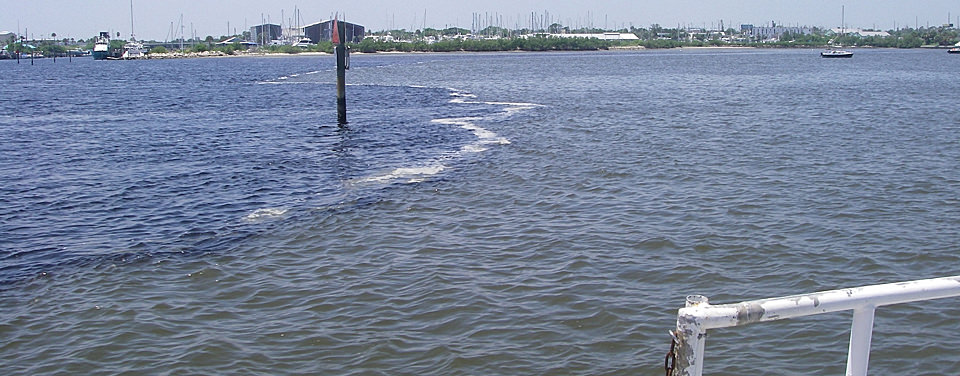Why is data on currents important?
Current data is critical for supporting safe and efficient shipping and marine transportation.

The speed and direction of currents can be measured. Oceanographers use a variety of tools, including buoys, to monitor currents.
With predicted, real-time, and forecasted currents, people can safely dock and undock ships, maneuver them in confined waterways, and safely navigate through coastal waters. This helps to avoid ship collisions or delay the arrival of goods.
In addition, current measurements are important for search and rescue operations, environmental disasters, and coastal engineering projects.
When supporting search and rescue operations, understanding the speed and direction of the currents in an area helps to narrow down the rescue and recovery effort. Current prediction information can help scientists clean up after a hazardous oil spill by helping them understand the direction and movement of the oil. Engineers also use currents information to help build marine structures such as bridges or docks and piers.
Current observations are also used to develop and evaluate coastal nowcast or forecast model products that are provided online.
Search Our Facts
Get Social
More Information
Last updated: 06/16/24
Author: NOAA
How to cite this article